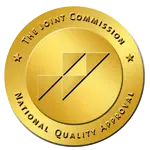Understanding the substances involved in substance abuse is a crucial first step toward recovery. At Pathways Recovery Center, we prioritize educating our clients about the dangers and characteristics of drugs like heroin, a highly addictive opiate that poses significant health risks. This section provides detailed information to help you recognize heroin, enhancing your ability to make informed decisions about treatment and recovery. Heroin typically appears in three forms: white powder, brown powder, and black tar heroin.
Each type’s appearance can vary significantly depending on its composition and purity, which often includes a range of adulterants, from powdered milk to more dangerous substances like fentanyl. Heroin is chemically odorless and tastes bitter, varying slightly depending on the additives. The “cut” of heroin – what it’s mixed with – can influence both its flavor and smell. For instance, black tar heroin might emit a strong vinegar-like odor due to the acetic acid used in its synthesis.
It’s important to note that heroin’s lack of a distinctive smell makes it difficult to detect, which adds to the challenges of identifying the drug without visual cues. According to the National Institute on Drug Abuse, heroin is used by approximately 0.3% of the U.S. population, and it was involved in over 14,000 overdose deaths in the United States in 2019 alone. These statistics highlight the critical need for awareness and education about this potent substance.
By understanding what heroin looks like and its potential odor and taste, individuals, families, and healthcare providers can better identify the presence of the drug, which is the first step in addressing and treating heroin addiction. At Pathways Recovery Center, we are committed to providing our clients with the necessary tools and support to navigate the complexities of addiction and recovery.
The visual identification of heroin is critical, given the drug’s severe risks and the variability in its appearance, which can significantly impact its potency and the dangers associated with its use. Heroin typically presents itself in one of three forms, each with distinctive physical characteristics that are influenced by the specific methods used in its production and the various additives that may be included.
The widespread availability of heroin, especially white powder heroin, in key regions highlights the critical importance of awareness and identification strategies. At Pathways Recovery Center, we emphasize education on the different forms of heroin as a crucial aspect of our comprehensive treatment and recovery programs. By equipping individuals, families, and healthcare professionals with this knowledge, we empower them to manage better the risks associated with heroin use and take proactive steps towards seeking help. This informed approach is essential for combating the spread of heroin and effectively addressing addiction challenges.
Heroin’s taste and smell characteristics are less distinctive compared to other substances like cannabis or tobacco. This lack of distinctiveness can make heroin more challenging to identify without visual cues or laboratory testing. Heroin has a predominantly bitter taste, which can be altered by various additives. The bitterness is generally consistent across different forms of heroin but can vary in intensity. This taste characteristic is rarely a primary method of identification since heroin is most commonly ingested through injection, smoking, or snorting rather than orally.
The odor of heroin can vary depending on its form and purity. Pure heroin is essentially odorless, which complicates detection efforts based solely on smell. However, certain types of heroin, particularly black tar heroin, may emit a vinegar-like odor due to the acetic acid used in its synthesis. This odor can become more pronounced with the degradation of the substance or when mixed with chemicals that enhance its smell during the manufacturing process.
Heroin is involved in a significant portion of drug overdose deaths in the United States. In 2021, nearly 9,173 overdose deaths were attributed to heroin use, underscoring the critical need for effective identification and intervention strategies. The subtlety of heroin’s sensory properties requires that law enforcement and medical professionals be particularly vigilant and knowledgeable to respond quickly in overdose situations and to make informed decisions during interventions.
At Pathways Recovery Center, we educate clients and their families about these aspects as part of a comprehensive approach to addiction treatment. Recognizing the subtle characteristics of heroin can aid in the early detection of use and is a crucial step in effective intervention and treatment planning.
Withdrawal from heroin can be intensely uncomfortable and a significant barrier to overcoming addiction. Recognizing the symptoms and signs of heroin withdrawal is crucial for those seeking to understand and support individuals in the recovery process. Symptoms can range from mild to severe and typically include:
These symptoms can begin within a few hours of the last drug use and are a clear signal that the body is adjusting to the absence of the drug. At Pathways Recovery Center, our detox programs are designed to help manage these symptoms in a safe environment, providing medical support and supervision to ease the withdrawal process.
Understanding the classification of heroin is essential for grasping its effects on the body. Heroin is not a stimulant but an opioid, which means it is a depressant that acts on the opioid receptors in the brain. Heroin works by creating a surge of pleasurable sensations, often described as a rush, followed by a state of sedation and decreased awareness of pain and emotional distress. This mechanism can make it highly addictive, as users seek to recreate these feelings, often leading to physical dependence and addiction.
Heroin addiction is a complex condition that requires comprehensive treatment strategies, including detoxification, therapy, and ongoing support. At Pathways Recovery Center, we provide a nurturing environment where individuals can embark on their journey to recovery with the help of a multidisciplinary team of addiction specialists. Our approach is holistic and tailored to each individual’s unique needs.
If you or someone you love is struggling with heroin addiction, it’s important to seek professional help. Understanding what heroin looks like, tastes, and smells like is just the first step toward recognizing its presence and impact. With the right support and treatment, recovery is possible. We are here to provide the care and support needed every step of the way.








